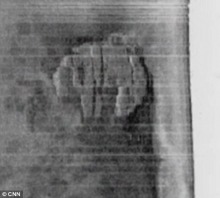Fascinating new data in Baltic UFO case
New dive team uncovers more questions than answers
The so-called "Baltic UFO" originally began last February as an unusual sonar image from the floor of the Baltic Sea. The large object was found by a deep-sea salvage company, and the images they released looked uncannily like the Millennium Falcon.
This expedition has returned to the Baltic Sea with a dive team, and so far everything they have found only deepens the mystery further. The dive teams first reported that the shape is not a flat disc, as it appears on the initial image. Instead, it is more of a mushroom shape with an egg-shaped hole in the center. It is about 10-15 feet high, and about 200 feet in diameter.
Weirder still, the egg-shaped hole appears to be charred in the center. And the object seemed to be covered with "strange circular rock formations that looked like small fireplaces," which also appear to be charred with soot.
The team also found a trail in the sea bed, which leads up to the object. The trail is about 900 feet long, and speculation so far includes the theory that it is the crash path, a drag tail, or even a runway.
Some people feel that this is a crashed UFO which has been lying at the bottom of the ocean waiting for us to find it. However, it is perhaps more plausible that this is just an example of glacier action at work.
During the Ice Age, as glaciers spread out across the land, they pushed large rocks in their path before them. These rocks all accumulated at the front of the glacier as it moved forward like an excruciatingly slow bulldozer. When the glacier stopped and began to retreat, these piles of odd rocks are left all jumbled up together.
Collectively, this gathered material is called "glacial drift." Where glaciers have moved large rocks, these are termed "glacial erratics." Although a glacial erratic can be anything from a pebble up, larger rocks are typically given the name. Also called "dropstones," these large rocks and boulders can provide geologists with valuable information about prehistoric glacial movement.
Large glacial erratics often become locally famous. The Wedgwood Rock in Seattle is a glacial erratic which was pushed all the way to Seattle from Mount Erie near Anacortes 14,000 years ago by the Vashon Glacier.
The track in the sea bed leading up to the mushroom-shaped "UFO" is excellent evidence that the Baltic UFO may turn out to be a glacial erratic.
